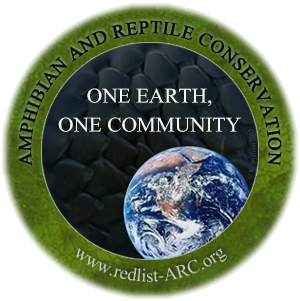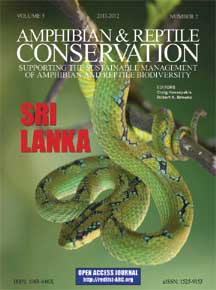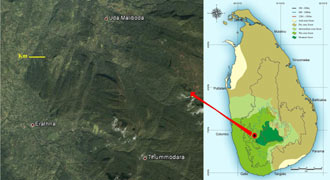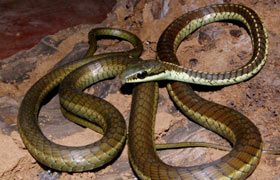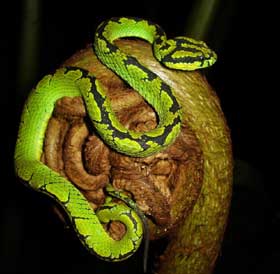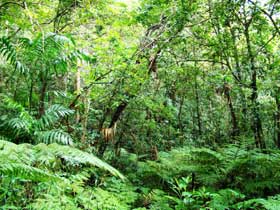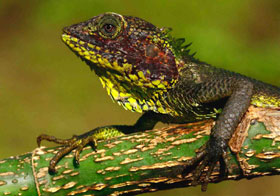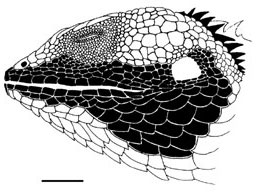|
VOLUME 5 (2) SRI
LANKA
INTERNATIONAL CHAPTER - AMPHIBIAN
AND REPTILE CONSERVATION
NOTIFICATION: This website and its
affiliates are the official Internet website portals for the Amphibian and Reptile
Conservation journal and our global conservation network. We own all copyright,
exclusive of authors copyright, produced by any proxy fraudulently presenting as Amphibian
and Reptile Conservation including the fraudulent www.amphibian-reptile-conservation.org as published by the "Amphibian and Reptile Conservation organisation" as
an illicit group led by Craig Hassipakis. Craig Hassipakis has a long and dismal history of
fraudulent activities, including recently committing perjury in an attack on our global
conservation network, as we document see Internet Fraud.
Table of
Contents
|
The herpetofauna of a small and unprotected patch of
tropical rainforest in Morningside, Sri Lanka. Peter Janzen and Malaka Bopage. Amphibian and Reptile Conservation
5(2):1-13.
PDF
|
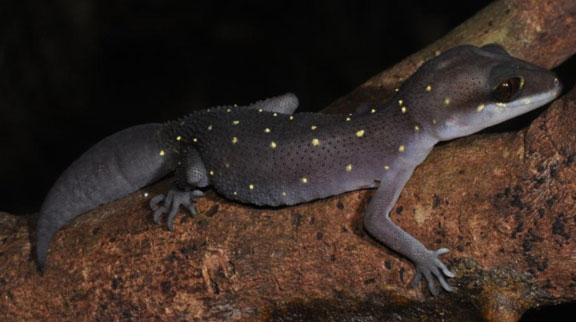 |
|
Summary:We identified thirteen amphibian species and
recorded an additional two species at Morningside that could not be
identified with existing keys.
We also identified 11 reptile
species and recorded one that could
not be identified.
|
|
Predator-induced plasticity in tadpoles
of Polypedates cruciger (Anura: Rhacophoridae). Krishan Ariyasiri, Gayan Bowatte, Udeni Menike, Suyama
Meegaskumbura and Madhava Meegaskumbura. Amphibian and Reptile
Conservation 5(2):14-21(e29).
Low resolution PDF 890K
High res. PDF
2180K
|
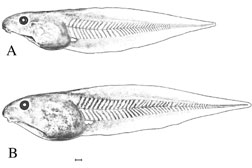 |
|
Summary: Aquatic tadpoles
morphologically respond to presence of predators in various
ways. Depending on the type of predator,
tadpoles develop enhanced escape response abilities and these are correlated to suites of morphological
characters, such as wider, longer, and
robust tail related dimensions. We exposed the tadpoles
of Polypedates
cruciger to a
natural fish predator and assessed their morphological
response.
|
|
Morphology and ecology of
Microhyla rubra (Anura: Microhylidae) tadpoles from Sri
Lanka. Gayan Bowatte and Madhava Meegaskumbura. Amphibian and Reptile Conservation
5
(2
):22-32.
Low
resolution PDF 1316K High res. PDF
6415K
|
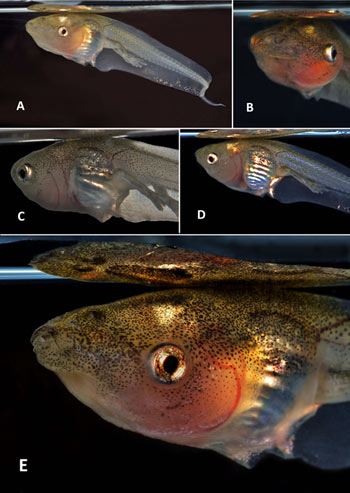 |
|
Summary: The life-history, ecology,
external and buccal morphology of Microhyla rubra (Jerdon,
1854) tadpoles are described. Tadpoles showed several characters that are not
seen in most other microhylids: a whip-like tail-end flagellum, a
dorsoterminal mouth, a transparent body, absence of flaps and existence of a
median notch on upper lip, presence of papillae (or scallops) on lower lip,
and a deep ventral tail fin (compared to the dorsal tail fin). Microhyla
rubra deposits its eggs ephemeral pools where conditions are
favorable for rapid growth, and with reduced risk of predation from fully
aquatic predators. Since oxygen concentrations in these habitats are low and
free ammonia concentrations are moderately high, occupying surface layers of
pools would enable the eggs and tadpoles to overcome these impediments to
growth and survival.
|
Conservation of biodiversity in a hotspot: Sri Lanka’s amphibians and
reptiles. Walter R. Erdelen. Amphibian
and Reptile Conservation 5(2):33-51.
|
 |
|
 |
Summary: Sri Lanka is a continental
tropical island that is considered a hotspot for amphibian and reptile diversity. To better
understand Sri Lanka’s conservation challenges and threats I discuss: Sri Lanka’s biogeography; its
extant ecosystems and landscapes along with the changes resulting from patterns of human
settlement; human population growth and its concomitant impact on natural ecosystems; and a brief
history of herpetological studies in Sri Lanka. I also discuss major conservation issues related to
the ecoregional and hotspot approach to biodiversity conservation, the IUCN species lists, and the
institutional framework in biodiversity conservation. Finally, I propose an integrated action plan
for the conservation of Sri Lanka’s herpetofauna.
Summary: Uda
Mäliboda Trail is located in the northwest region of Samanala Nature Reserve (SNR) in Sri Lanka’s
wet zone. We report the results of a study of herpetofaunal diversity along the Uda
Mäliboda Trail. Thirty-four amphibian (26 endemic and 19 Threatened) and 59 reptile (32
endemic and 19 Threatened) species were observed. This very high diversity makes the region
surrounding the Uda Mäliboda Trail among the most important herpetofaunal conservation areas
in Sri Lanka. Threats to the herpetofauna in the region are discussed.
Summary: Kalugala Proposed Forest Reserve is a primary lowland
tropical rain forest, surrounded by secondary forest and human modified vegetation. Herpetofaunal
communities of in closed forest, forest edge, home gardens, and cultivations were assessed and
distribution patterns were compared. A total of 24 amphibian species (63% endemic and 33%
Threatened) and 53 reptile species (38% endemic and 30% Threatened) were recorded. Reptilian
distribution patterns are similar to amphibian distribution patterns, with the highest diversity in
the closed forest and the lowest diversity in cultivations. We did not observe an effect of forest
edge (edge effect) in amphibian and reptile diversity, except for forest edge and cultivations for
reptiles. Adverse human activities such as improper agriculture practices, logging, and waste
disposal have led to deforestation and habitat loss in KPFR.
Summary: The Knuckles Forest Reserve and
forest range is a paradise for a large number of endemic Sri Lankan taxa, including a considerable
number of amphibian and reptile species. A survey carried out on the western slopes of the
Kaluganga catchment of Knuckles Forest Reserve recorded 19 species of amphibians and 30 species of
reptiles. Of these, 15 species of amphibians and 17 species of reptiles are endemic to Sri Lanka,
and 11 species are restricted to a few localities in the Knuckles forest range. Three unidentified
species possibly new to science were discovered in the study, and we recommend that these species need further study for taxonomic
identification.
Summary: Here we redescribe Calotes
nigrilabris, Peters, 1860, based on the holotype, newly collected material from Thangappuwa
(~1000 m a.s.l.) in the Knuckles massif in 2003, and published literature. Observations on the
ecology, natural history, reproduction, and behavior of C. nigrilabris are noted. Current
habitat destruction and pesticide use are considered as primary threats to C. nigrilabris.
A key to identifying members of the genus Calotes in Sri Lanka is
provided.
Summary: Territorial behavior is an
important component of the life history of Lyriocephalus scutatus. Lyriocephalus
scutatus belongs a the monotypic genus and its uniqueness extends to
its unusual behavior and atypical site fidelity. The degree of “aerial horizontal
distribution” of L. scutatus seems to be a novel behavior among lizards. Individual L.
scutatus are highly territorial over other individuals of the same sex, as adult males
observed in the study sites solely performed their territorial displays on a specific tree, whereas
females occupied the largest
territories.
Summary: Six different habitat types which included forest edge,
seasonal pond, rock, shrub, grassland, and home garden habitats were selected and systematically
sampled to identify the habitat preference of Pseudophilautus regius. The highest
percentage (53%) of individuals were recorded from the forest edge habitats, 23% from shrub land
habitats, 20% from home gardens, and 2% from grassland and seasonal ponds. No individuals were
found in the rocky areas. The number of observed individuals of Pseudophilautus
regius increased with the rainfall in forest habitats and simultaneously decreased in the
home gardens.
|

